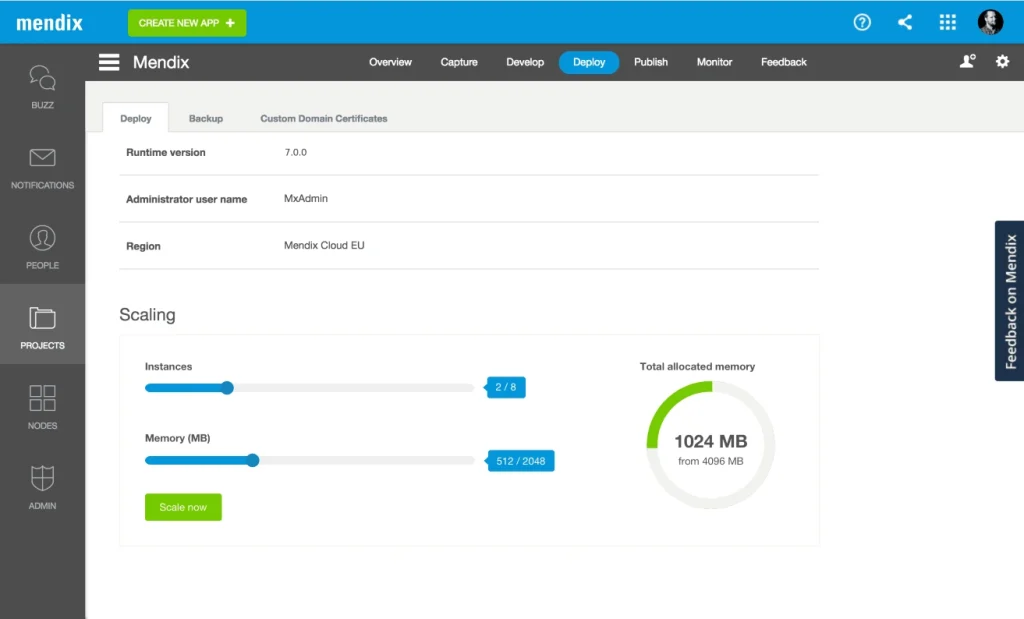Downsides of traditional cloud development
Why do businesses nowadays like cloud so much? 3 words: Lightweight, scalable, and reliable. For the past few years, enterprises have increasingly utilized new cloud tools such as microservices and containers. Over two-thirds of 500 IT leaders recognize cloud-native development as a highly required skill for their enterprise.
This type of development is shown to enhance the scalability and agility of the business. By working with a cloud-based structure, engineers can simplify computing workloads and provide new features quickly in response to changing business dynamics. Integral as it is, cloud-native technology still possesses some downsides that organizations must face.
A successful cloud solution requires many skills and experience related to cloud and database architecture. Due to the high demand, the number of skilled cloud developers is running short. This eventually leads to increased development costs at the early stage of building an app, and this stage can be lengthy.

When opting for cloud solutions, software developers might be confused about where and what web services to start with. This problem stems from the recent rapid influx of web services.
On the one hand, the application of cloud technology might provide developers with the resources and development speed they need. On the other hand, it would require developers to manage a sophisticated web of enterprise’s app portfolio.
Why low-code is an alternative for cloud development
Low-code technology enables users to visually develop applications using a click-to-point approach. Instead of complex lines of code, they are regrouped into “blocks,” which users can drag into the proper sequence or model.
Low-code allows non-technical users to build apps without prior coding knowledge and professional developers to automate mundane tasks. However, it doesn’t remove complexity in cloud development. It does make the process more approachable and efficient for users of different levels.
Low-code helps organizations and their developers readjust architecture and delivery in cloud development by reducing hand-coding. Organizations can save their budget and invest in other time-consuming, highly demanding, complex tasks. The scalability is also improved with low-code cloud development, as the technology can make necessary changes while maintaining adequate coordination across the entire program.
As if all the mentioned benefits aren’t great enough, low-code can also exceed collaboration between technical and business teams. You have definitely witnessed the fight between IT and other departments at least once throughout your career. Having low-code, how can it put out the fire?
- Non-IT departments can use low-code to create simple prototypes to describe their idea.
- Business users and citizen developers can build a beta version of their cloud application and test it before transferring it to the IT team for deeper customization.
- Access control and real-time update instantly boost feedback and teamwork.
Discover the ways non-IT departments can bring their ideas to life and enhance collaboration. Learn how low-code empowers citizen developers in the journey of digital transformation
Real-life case studies of using low-code cloud development

Let’s look at this example of microservices to help you imagine how low-code excels in your cloud development.
Microservices is one of the essential components for the adoption of cloud-native development. Low-code can create microservices and contribute to legacy modernization through them.
PostNL is the national postal carrier of the Netherlands, serving 17 million users and delivering approximately 8.1 million packages daily. After the rise of eCommerce, PostNL had to deal with a greater volume of parcels, and its legacy management system could not handle the excessive business demand.
They sought out low-code technology to rebuild the core management system and developed a new microservice architecture. The outcome was optimistic, as the new system can now process an average of over 1 million parcels daily, while improving the productivity of the service agent by 10%.
Synodus list: Top 5 low-code cloud platforms
1. OutSystems

OutSystems provides a safe, reliable, and cloud-ready low-code solution for businesses to increase their efficiency and performance. With the help of AI, OutSystems can easily solve such strategic issues, namely workplace innovation, business process automation, and many more.
OutSystems Developer Cloud is a cloud-native low-code platform based in Amazon Web Services with support for Kubernetes, microservices, and Linux containers. Using this low-code cloud platform allows users to architect plans hassle-free and fast, making room for more creativity, productivity, and continuous app evolution.
The CI/CD processes in the background eventually allow non-technical users to deliver apps at the same speed as professional DevOps developers. Elements in cloud-native application development are auto-scaled, resulting in lower costs and effort spent on Kubernetes. OutSystems also prioritizes API to extend capabilities on management, monitoring, authentication, and other complex tasks.
2. Microsoft Power Apps
Regarded as one of the leaders in Low-code, Power Apps provides a friendly development environment to quickly build enterprise-graded applications.
This low-code platform is secure with Microsoft cloud services, including Azure, Microsoft365, and Dynamic365. It also offers several cloud-storage connections, such as OneDrive, Box, Dropbox, and Google Drive to connect and expand your database. Power Apps allow citizen developers and professionals to collaborate in the development process, with the ability to share and work on any device.
Not only does Power App allow you to build applications with fewer resources, but it also automates business workflow with generative AI. By harnessing the power of AI capabilities, you can create a logical and clean process for better management.
Check out our: Honest Review of Microsoft Power Apps Low-code
Microsoft Power Apps can develop both low-code cloud native and cloud-based applications. Examples of how to build a Cloud-based Inventory Management App with PowerApps and SharePoint!
Certified as the gold partner of Microsoft in Low-code Development, Synodus supports businesses in creating scalable cloud applications for monetization and internal use.
Our well-versed experts seamlessly embedded extensive cloud technology such as AWS, Azure, Kubernetes, Microservices, etc, into your cloud application. At the same time, we ensure thorough training and deployment so that your team can perform maintenance afterward. View our portfolio!
3. GeneXus

If you are looking for an AI-integrated solution for automation and app maintenance in multiple environments, Genexus is the best choice. It can give users automation and traceability features in all system update cycles, making your applications adapt to growing needs without hassle.
This low-code cloud platform allows users to build complex, foolproof cloud systems in a fast, simple, and cost-effective manner. Its latest update also makes deployment management more manageable and more traceable. Some notable features are the Databases catalog, Backup / Restore of databases, Developments Log & diff, and many more.
Working with GeneXus, you also get instant support to build necessary cloud architecture and configure them properly. All the deployments and updates to the app are set up to be done as needed. Speaking of automation, GeneXus, with the help of components, can automatically validate, package, transfer, and publish customers’ apps to the Cloud.
Discover how low-code AI platform can enhance your app development and maintenance in this article
4. Creatio

Creatio is known to be built on leading cloud infrastructures like Amazon Web Services and Microsoft Azure. This low-code cloud platform helps prevent the risks of relying on a single provider and endures disaster better.
A typical feature that makes it stand out is a robust BPM engine for managing various processes and a strong analytics system for unraveling issues.
Horizontal scaling is highly optimized by low-code cloud solutions to ensure efficiency in user activity and workload. New infrastructure elements can be engaged and configured whenever threshold overload happens.
By deploying it on-site, users gain direct access to the database, using their own certificates and security settings, configuring personal permission, and so on.
Unlock the potential of low-code BPM for optimized business process efficiency in this article: Why You Should Use Low-code BPM To Improve Workflow
5. Mendix

If you are looking for a low-code platform for cloud native development, Mendix is the one. Its cloud native ecosystem includes public Mendix Cloud, Mendix Cloud Dedicated, and Mendix for Private Cloud, from which users can choose suitable and easy access. Each option will suit different usage, enterprise types, and top benefits that users can receive.
Mendix is backed by reliable cloud providers, such as Azure, Google Cloud, AWS, and SAP. Therefore, Mendix’s low-code cloud solution ensures lower risks, higher resilience, and security. Apps created by Mendix are portable, scalable, resilient, and unique. They can be easily deployed to public platforms whit a single click.
Users can easily and securely make changes by using manageable microservices from Mendix. Customers of Mendix are also assured of a high uptime rate, instant backup, and recovery.
What to expect when using low-code for cloud development

Many say low-code is the future of software development. Yet, this technology is still evolving and sometimes falls behind traditional development. You must acknowledge the possible downside before implementing low-code cloud into your business.
- Low-code is not that easy to use. Drag and drop can ease the development process, but customization is the key to make your application work and fit your business model. Make sure you provide your employees with proper training and establish a step-by-step process with regulations.
- As a part of cloud, microservices focus more on internal functionality and usually be more code-oriented. On the other hand, most low-code focuses on front-end and automation, which makes customize microservices become one of its weaknesses. Our recommendation is to set up free microservices hosting, where it can interact with other microservices for final deployment. The second choice is to choose a low-code platform that is already backed by cloud computing platforms.
Despite the minor downsides, low-code is still a great technology to consider, especially if you don’t have many resources. To know if it’s best for your cloud project to use low-code or not, you should consult with low-code experts, such as Synodus, for more insights.
Wrapping up
Traditional cloud development has its lowdown, and low-code can be an excellent alternative for your businesses. It can be an effective tool with many advantages that developers and companies can benefit from. Given our recommendation for the top low-code cloud development platform, users should consider everything to pick out the one that would give the best solution. Synodus is pleased to instruct you on this topic and looks forward to accompanying you in upcoming posts.
More related posts from Low-code blog you shouldn’t skip:
- 5 Ways Low-code Disrupts Digital Transformation & What You Can Learn
- Top 10 Low-code Website Builders Review (Pricing + Features)
- Top 10 Low-code Web App Builder to Replace Traditional Coding
How useful was this post?
Click on a star to rate it!
Average rating / 5. Vote count:
No votes so far! Be the first to rate this post.




